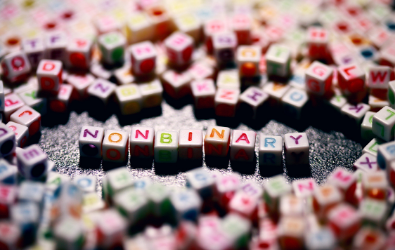According to Guardian’s Workforce 2020 report, 68% of Americans think it is important to work for an employer that creates an inclusive workplace culture. In order to be such an employer, companies need to educate themselves about what is changing and then adapt accordingly. A major example of societal growth is gender inclusivity. We must do more to support people’s gender identity. Here are a few ways you can support people’s gender identity both in your workplace and in your external communications.
Use Inclusive Language
Companies and brands need to be more inclusive and aware of gender identities in the language they use in their communications. To respect and correctly speak to specific groups, we must be aware of the terms we are using. We may make mistakes, but it is important to keep trying to use inclusive language. One of the simplest ways we can respect gender identity is by asking someone to state their preferred pronouns. It is important to remember that we cannot assume someone’s gender identity by their appearance. There are different pronouns that non-binary people use, but the most common term you will see people using is they/them. Although you may feel awkward asking someone what their pronouns are, remember you are doing so to build a more inclusive environment. Talking about pronouns normalizes conversations about gender. One example of how gender inclusivity is being incorporated into daily interactions is that a growing number of people are including their preferred pronouns in their bios and email signatures to promote inclusivity.
Educate Yourself
As people begin to feel more comfortable living as their authentic selves, we must continue to educate ourselves. Research how language is changing. There are different resources you can use to expand your understanding of gender identity. As Conscious Capitalists, we have a responsibility to build inclusive brands and education is the first step.
For example, gender non-binary people have begun using the term “Latinx” to be more inclusive. Latino/a implies that someone is either female or male. Some people are critical of Latinx because they believe it is anglicizing Spanish. While native Spanish words do not usually include “x” in the way the English language does, language evolves. By staying up to date on terms people are using, you are validating their gender identity.
Create Gender Neutral Campaigns
Apart from using gender-inclusive language, brands can create campaigns that actively dismantle gender stereotypes. Some cosmetic brands are shifting away from the stereotype that only women wear makeup. Fan-favorite Glossier uses its social media to promote their products for everyone. On their website, Glossier also has an opportunity for their customers to share their own photos using the product. Their “IRL” section builds a community of Glossier fans that is inclusive. Since their brand is a mix of skincare and makeup, the company wants to appeal to everyone.
You can also remove gender from your campaign entirely. The popular handbag brand Telfar is specifically marketed as unisex. Their website does not feature any models or “female” and “men” sections. On social media, they repost their customer’s photos but never focus on a specific gender. Not only does this expand their audience, but it helps normalize the idea that anyone can use a well-made bag.
At Teak, we want to support brands and organizations that are committed to inclusivity. Read more about our commitment to diversity and inclusion here: https://teakmedia.com/who-we-are/mission/


